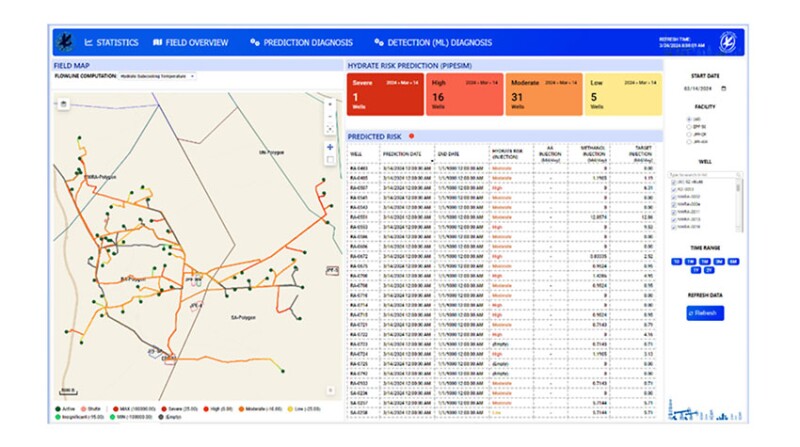The Kuwait Oil Company and SLB’s joint Kuwait Integrated Digital Field project for the North Kuwait Jurassic Gas asset is a key aspect of Kuwait’s gas production. The platform presented here streamlines planning and execution with advanced workflows and automation. However, the formation of hydrates in flowlines and separators resulted in substantial deferments of gas and oil production. To combat this issue, a comprehensive hybrid approach has been adopted, combining machine learning (ML) with a physics-based risk-prediction model.
Introduction
The North Kuwait Jurassic Gas field is a high-pressure, high-temperature gas-condensate field that has been in production since 2010, with over 160 active wells and six gas-processing facilities and plans to more than double the producing wells during the next 3 years.


